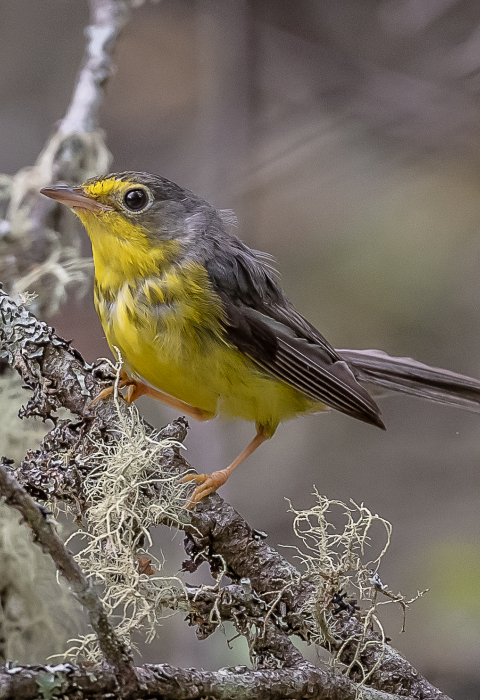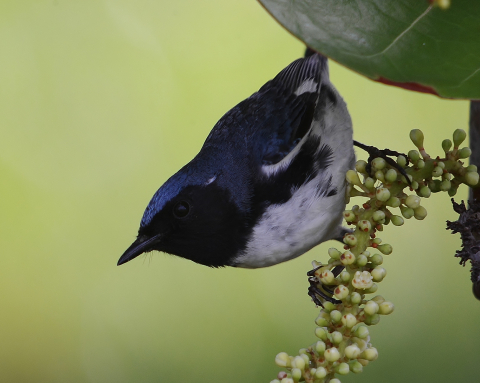Songbirds Head for Thick Growth
Conservationists working to reverse population declines of forest-interior birds try to preserve the older woodlands where such birds breed. Research by Scott Stoleson, a U.S. Forest Service biologist, suggests that areas of young forest may be just as important.
Studying 4,000 Birds
In the Allegheny National Forest in western Pennsylvania, Stoleson used mist nets to capture almost 4,000 songbirds in different-aged forest stands, after the birds had bred and fledged young. As well as identifying the birds' species and age (adult or juvenile), he checked their overall condition, including whether they were building up fat to fuel their migration south in autumn.
Stoleson caught and evaluated birds of 46 different species: 33 percent were kinds that nested in mature forest, 22 percent bred in forest-edge areas, and the remaining 45 percent bred in young forest. Among the mature-forest breeders were 15 species of vireos, tanagers, warblers, and thrushes.
Individuals of all 46 species were found in areas where timber had been harvested through clearcut logging and where young trees were growing back thickly. When Stoleson set up his nets in older forest, he caught birds of only 29 species.
"Humans have really changed the nature of mature forests in the Northeast. Natural processes that once created open spaces even within mature forests, such as fire, are largely controlled, diminishing the availability of quality habitat," says U.S. Forest Service biologist Scott Stoleson
Abundant Food Boosts Health
Stoleson concluded that the birds' use of young forest during the post-breeding period resulted in better physiological condition. He believes that population declines in forest-interior species may stem in part from the increasing maturity and homogenization of Eastern woodlands and the dwindling of young forest habitat.
Read Stoleson's research paper, Condition Varies with Habitat Choice in Post-Breeding Birds.
Foresters for the Birds
The Audubon Society also realizes that forest diversity is important to our region's birds. They have teamed up with state agencies to Foresters for the Birds programs, which promote the careful use of timber harvests to make sure Eastern birds have enough of the young forest habitat that they need.


